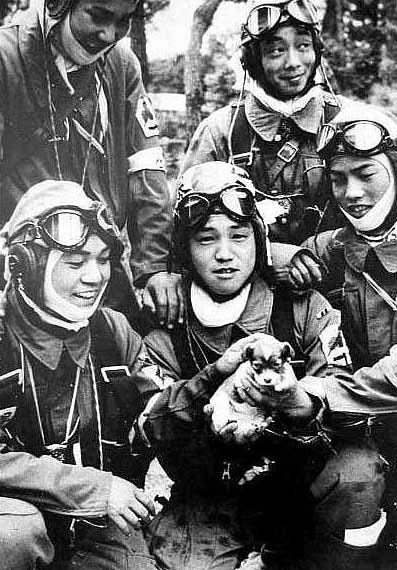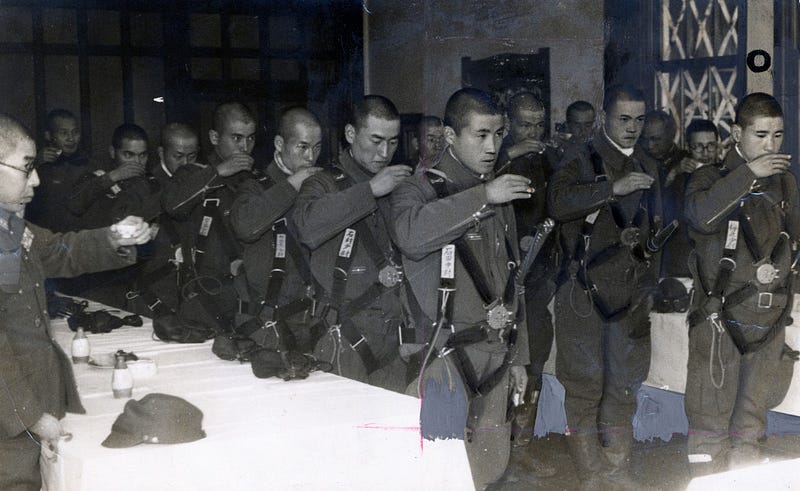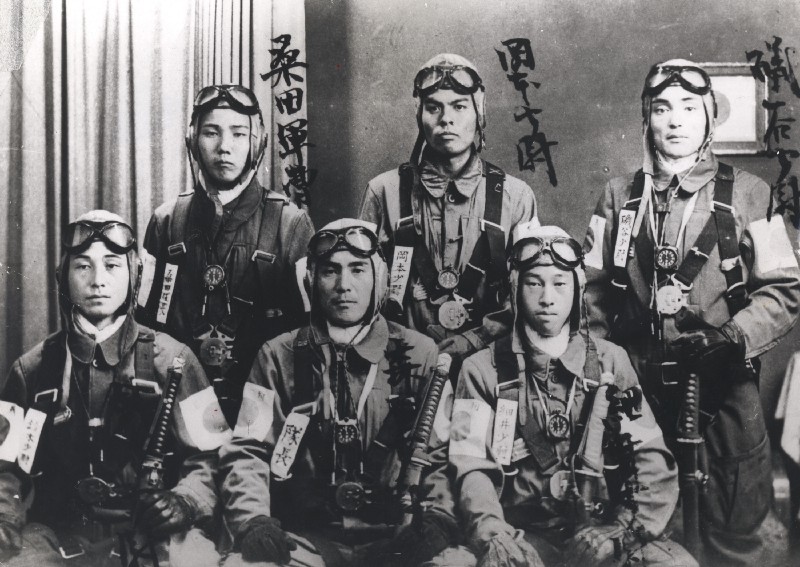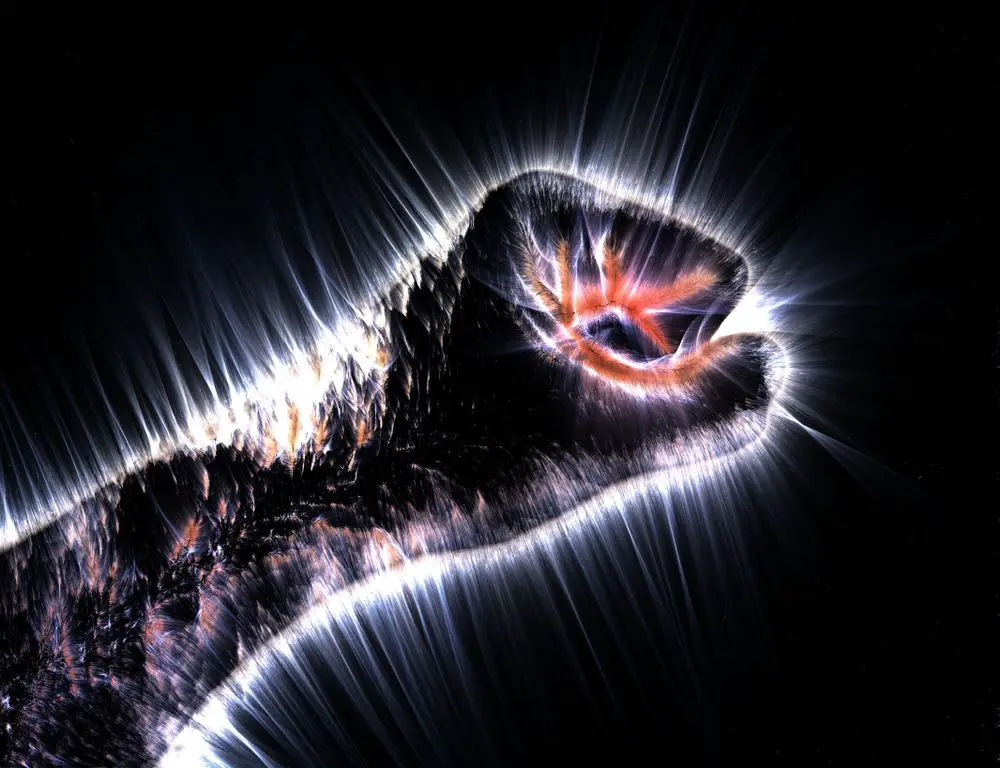 he Japanese use of Kamikaze pilots in the Pacific campaign against the United States was perhaps the most extreme tactic ever used by the Rising Sun Empire to gain an advantage over the enemy. This tactic was born out of the need to destroy the American aircraft carriers, which defined American dominance across the Pacific theatre. American aircraft carriers were usually heavily guarded by both high-quality American fighters and anti-air guns mounted on the carrier itself.
he Japanese use of Kamikaze pilots in the Pacific campaign against the United States was perhaps the most extreme tactic ever used by the Rising Sun Empire to gain an advantage over the enemy. This tactic was born out of the need to destroy the American aircraft carriers, which defined American dominance across the Pacific theatre. American aircraft carriers were usually heavily guarded by both high-quality American fighters and anti-air guns mounted on the carrier itself.
During the later stages of the war, Japanese fighter aircraft could not hope to compete against the superior American variants and thus a new way to strike at the heart of the American fleet was required. These circumstances gave birth to the Kamikaze tactic. But what would happen if a pilot tasked with this vital task failed his mission and returned?
For the Emperor
Honour has always played a big part in Japanese society. Many who volunteered in the Kamikaze Corps saw it as an honor to die for their country. It was also believed that the show of honor and selflessness shown by a Kamikaze pilot willingly sacrificing himself for this country would have massive psychological impacts on the invading forces.
Even more importantly, Kamikaze attacks were much more accurate than bombing runs, allowing the Japanese Air Force to target the weak points of American ships, making this tactic much more efficient than the traditional bombing run, something vital for the already weak and overextended Japanese armed forces.

Many people in Japanese society looked up to the Kamikaze pilots as they were seen as the ultimate show of loyalty to the emperor. As such, they received better rations during their training, although this was outweighed by the harsh training and disciplining they were put through during the preparation for their final day. Even with all this preparation and nationalistic zeal, some of the pilots were too scared to perform their task or experienced mechanical failures during their ‘last flight’, forcing them to return back to Japan.
Failure and dishonor

The Kamikaze pilots who returned fall into two distinct groups. Those who returned due to weather conditions or mechanical failures in their place and those who returned due to not being able to perform their task successfully due to psychological reasons. Each group received different treatment on their return.
The pilots who could prove that their return was caused by conditions outside of their control were neither punished nor looked down upon. During a stage of the war when even pilots were classed as a scarce resource, the Japanese could not afford to lose a well-trained Kamikaze pilot; thus, their return was accepted, and their ‘last flight’ was rescheduled, although some still felt survivor’s guilt over if they were the only one in their squadron to survive.
For those pilots who couldn’t prove that their return was caused by factors outside of their control, their treatment would be a bit different. Although still not executed, these pilots would receive some sort of punishment, be it physical or mental. These punishments were not to be too severe as the pilot had to be ready for another flight at some point in the future, so nothing that would damage that ability would be performed. Even so, this had a limit, as seen with one pilot who returned 9 times from his Kamikaze mission. He would be executed on his 9th return for cowardice.
To combat these mental factors that would stop the Kamikaze pilots from completing their tasks, a few measures were implemented. Kamikaze pilots would often fly in squadrons to increase the peer pressure between colleagues leading to fewer pilots flaking off and not completing their task. Pilots also received alcohol before their ‘final flight’ giving them some ‘liquid courage’ to help them complete their task.

Many think that the pilots were also given just enough fuel to make it to their target as another incentive, but this wasn’t true as we now know that these pilots were such a scarce resource that this wouldn’t be a viable way of incentivizing them to perform their task.
When you eliminate all thoughts about life and death, you will be able to totally disregard your earthly life. This will also enable you to concentrate your attention on eradicating the enemy with unwavering determination, meanwhile reinforcing your excellence in flight skills. — Excerpt from a kamikaze pilots’ manual
Desperation
As always, war brings out the worst in humanity, something that cannot be more true of the Japanese. In a society, so where honor and subservience to the emperor means more than one’s life, such tactics as using Kamikaze pilots or making infantry suicide bomb tanks could be justified and even celebrated by the general populace as they aided the war effort.
Japan would commit many despicable war crimes during the Second World War in a search to best their enemies, stopping at nothing to do so. We see this with the experiments performed by Unit 731 and the atrocities committed in mainland China in a quest to placate the rebellious population.
Japan has always been an interesting case study in history and will remain as such due to the unique culture the hermit civilization developed over the centuries of isolation from influence outside of their island. I look forward to exploring the history of this country further someday.

Student of Philosophy, Politics and Economics. History fanatic. Contact: aneculaeseicg@gmail.com





